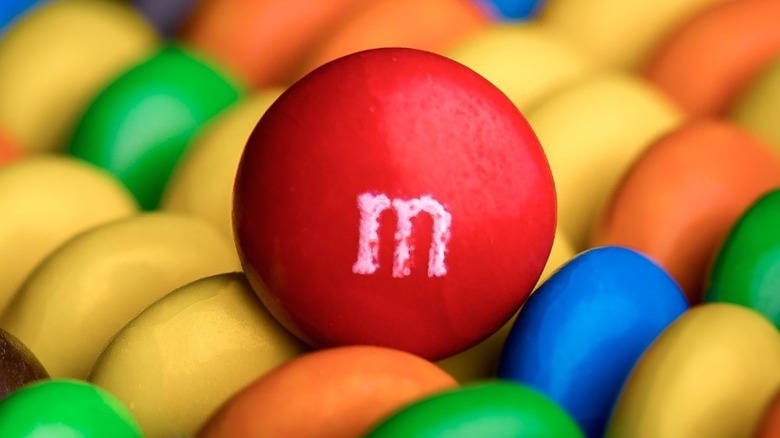Why Google Employees Once Had An Issue With M&M's
It's the candy that melts in your mouth, not in your hand, but did you know that M&Ms also nearly caused a meltdown at Google's offices?
In 2012, Google commissioned a team of people with advanced degrees to address a problem its employees were having with the candy-shelled chocolate. No, it wasn't an office brawl about whether the brown M&Ms are actually brown or if that's just the color of the chocolate. It also had nothing to do with whether you're supposed to make sure you have one of each color in every handful before you put them in your mouth. Though some Google employees might have used the colorful candies to make artwork on their breaks, like the projects that Inspiration Laboratories suggests, that didn't become the problem, either.
Rather, Google became concerned about an emerging behavior pattern among its employees in relation to M&Ms. After some research, Google ultimately made a simple policy change and the issue became much less prevalent among its workforce.
A simple fix solves the M&Ms quandary
As Mental Floss explains, Google provides free M&Ms for its employees. Over time, the company became concerned about employees' consumption of the candies. Mental Floss says that Google hired a team of people with PhDs to investigate why the candies, available in Mashed readers' most-beloved flavor, were disappearing so quickly.
The results led to a simple solution. Mental Floss explains that the research concluded that the prominent placement of the candies made them easy fodder for employees to grab as they were moving throughout their days. Rather than end the popular employee perk entirely, though, Mental Floss says Google came up with a more strategic solution — they put healthier snacks like figs and nuts where the M&Ms were. Then, Google relocated the M&Ms to jars that concealed their colorful exteriors, and as a result, Google employees consumed far less of the candies.
The Journal of Consumer Research explains how Google's fix has some backing in behavioral science. A study published in the journal suggests that the variety of a food's colors can lead people to overindulge. In that study, researchers found that people who were offered M&Ms in 10 different colors ate 43% more than those who were offered them in seven different colors. Moreover, LiveStrong states that over-consumption of M&Ms can lead to health problems, so Google was justified in its concern. Google's solution proved that in this case, out of sight also means out of stomach.

